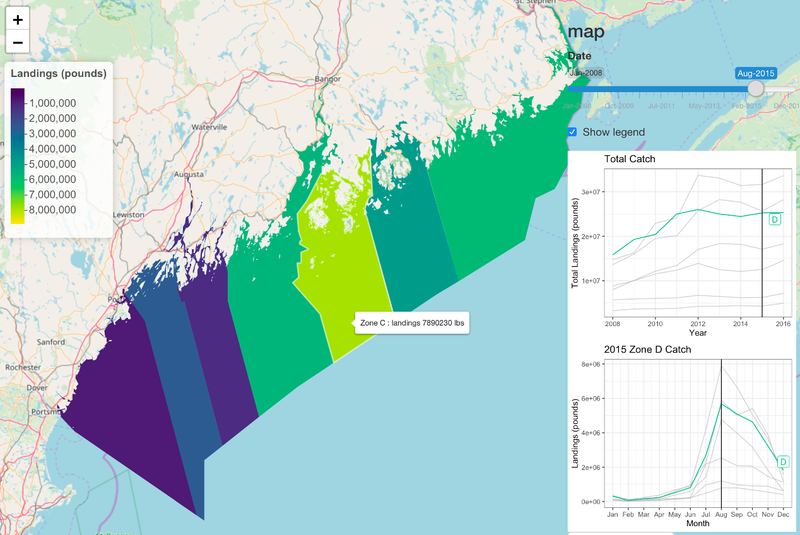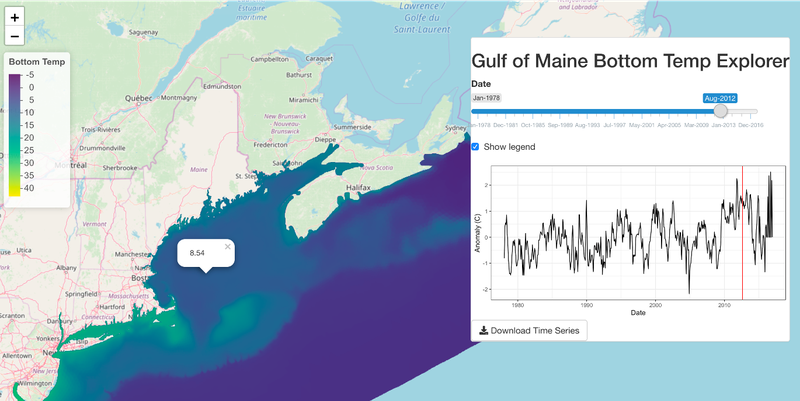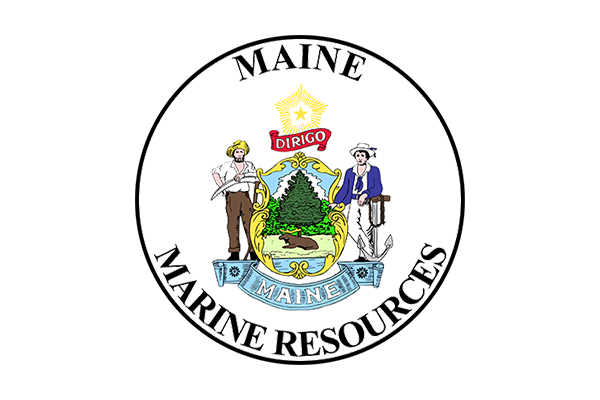Ecosystem Change Indicators for Lobster
Developing lobster ecosystem indicators to improve fishery management strategies
The Maine lobster fishery exists in a rapidly changing ecosystem, and there is a clear need to understand how these changes impact lobster biology, population dynamics, and ultimately, the Maine lobster fishery. As part of the Maine Lobster Research Collaborative, we are developing and testing a suite of ecosystem indicators that can be used to explore connections between lobster biological processes and fishery management strategies.
Project Goals:
- Develop a suite of lobster-relevant habitat and ecosystem indicators for the Gulf of Maine.
- Analyze trends and relationships between indicators over time.
- Evaluate the connection between indicators and lobster population dynamics.
- Advance the collective understanding of the lobster population and fishery in a changing Gulf of Maine.
The Gulf of Maine has been warming rapidly over the past 30 years, a trend recently punctuated by more frequent ocean heatwaves. The region also experiences high levels of seasonal and interannual variability in physical conditions such as currents and winds. Further, the predator community for lobster has changed — fishing pressure has reduced groundfish threats, but warming waters bring new lobster predators to the Gulf of Maine. These ecosystem changes influence lobster biological processes, like molting and growth, size at maturity, fecundity, larval survival, and recruitment. Ultimately, these biological processes shape lobster populations and the Maine lobster fishery.
We are developing a suite of ecosystem indicators to identify changes in the ecosystem and analyze influences on lobster biological responses and fishery direction. Indicators will include physical and biological conditions such as surface and bottom temperature, salinity, stratification, position and strength of the Maine Coastal Current, and lobster predator indices. We will analyze trends over time within indicators, but will also analyze how the indicators relate to lobster population dynamics and fishery characteristics. We work through the Maine’s Lobster Research Collaborative to ensure insights from this project contribute to the collective understanding of lobster and the lobster fishery in a changing Gulf of Maine.
Lobster Dashboard Tools
Understanding ecosystem indicators, like lobster landings and bottom temperatures over time, can help fishery managers develop more forward-thinking management strategies.


Project Team
Project Sponsor
This project is funded by the Maine Department of Marine Resources through the Lobster Research, Education, and Development Fund.
Read Next
-
![Marine Heatwaves 101]()
Marine Heatwaves 101
Learn about what marine heatwaves are and how they can disrupt coastal ecosystems and the communities that depend on them.
Perspectives
-
![20 Years on the Waterfront: Reflecting & Looking Ahead]()
20 Years on the Waterfront: Reflecting & Looking Ahead
Celebrating our collective journey toward a thriving future
Perspectives
-
![The Impact of Learning Ecosystems Northeast]()
The Impact of Learning Ecosystems Northeast
Learning Ecosystems Northeast (LENE) is a NASA-funded collaborative partnership with the Gulf of Maine Research Institute (GMRI), 4-H, Maine State Libraries, Wabanaki Youth in Science, …
Perspectives
-
![The Alewife Journey: A Conservation Success Story]()
The Alewife Journey: A Conservation Success Story
On a spring evening at the Gulf of Maine Research Institute, guests gathered for the premiere of a film celebrating one of Maine’s most remarkable …
Perspectives




